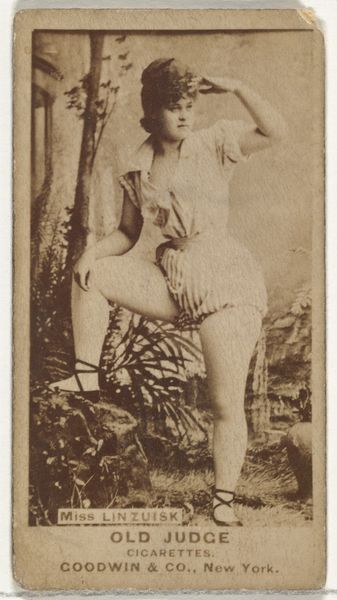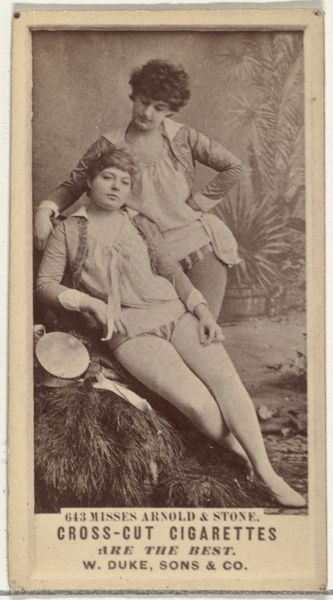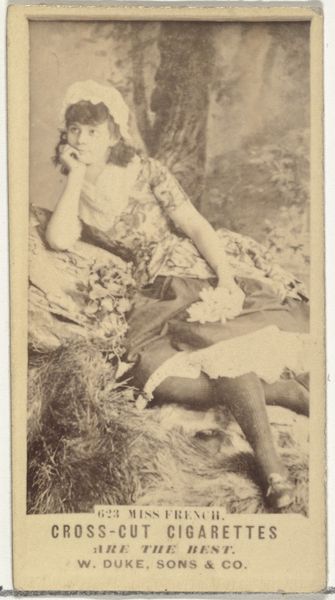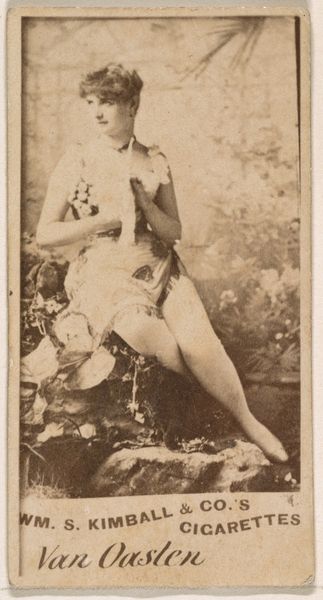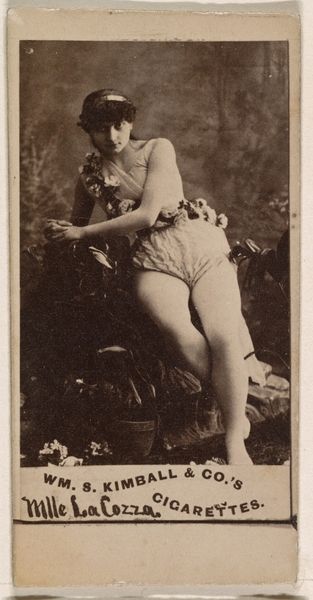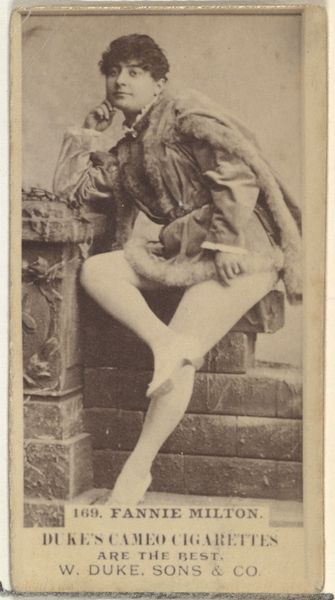
Card Number 612, Misses Arnold and Stone, from the Actors and Actresses series (N145-3) issued by Duke Sons & Co. to promote Cross Cut Cigarettes 1880s
0:00
0:00
drawing, print, photography, albumen-print
#
portrait
#
drawing
# print
#
photography
#
albumen-print
Dimensions: Sheet: 2 11/16 × 1 3/8 in. (6.8 × 3.5 cm)
Copyright: Public Domain
Editor: This is Card Number 612, Misses Arnold and Stone, from the 1880s. It's an albumen print advertisement for Cross Cut Cigarettes, made by W. Duke, Sons & Co. It feels… staged, almost uncomfortably so. What’s your take on it? Curator: I'm drawn to how this object blurs the lines between art, commodity, and labor. This albumen print wasn't conceived as high art but as a mass-produced advertisement. Consider the social context: the late 19th century saw the rise of consumer culture fueled by industrial production. Photography, previously a laborious process, became increasingly accessible, turning actors into marketable commodities. The image’s purpose was to associate these performers with a product—cigarettes. How does this context shape our understanding of it? Editor: I see your point about the blurred lines. So, instead of looking for artistic intent, we examine the manufacturing, marketing, and even the consumer experience surrounding this little card? Curator: Exactly. The “best” cigarettes weren’t just about tobacco; they were packaged and sold using images like this. Furthermore, who were Misses Arnold and Stone? Their labor as performers became entangled with the labor of factory workers producing the cigarettes and the photographic prints. These are all part of the object’s history. This card highlights the link between entertainment, industry and marketing. Editor: That makes so much sense. I hadn't considered the actors' labor fitting into the same materialist framework as the print production. Curator: It challenges our assumptions about what constitutes valuable artistic labor and the purpose of images themselves, wouldn't you say?
Comments
No comments
Be the first to comment and join the conversation on the ultimate creative platform.
